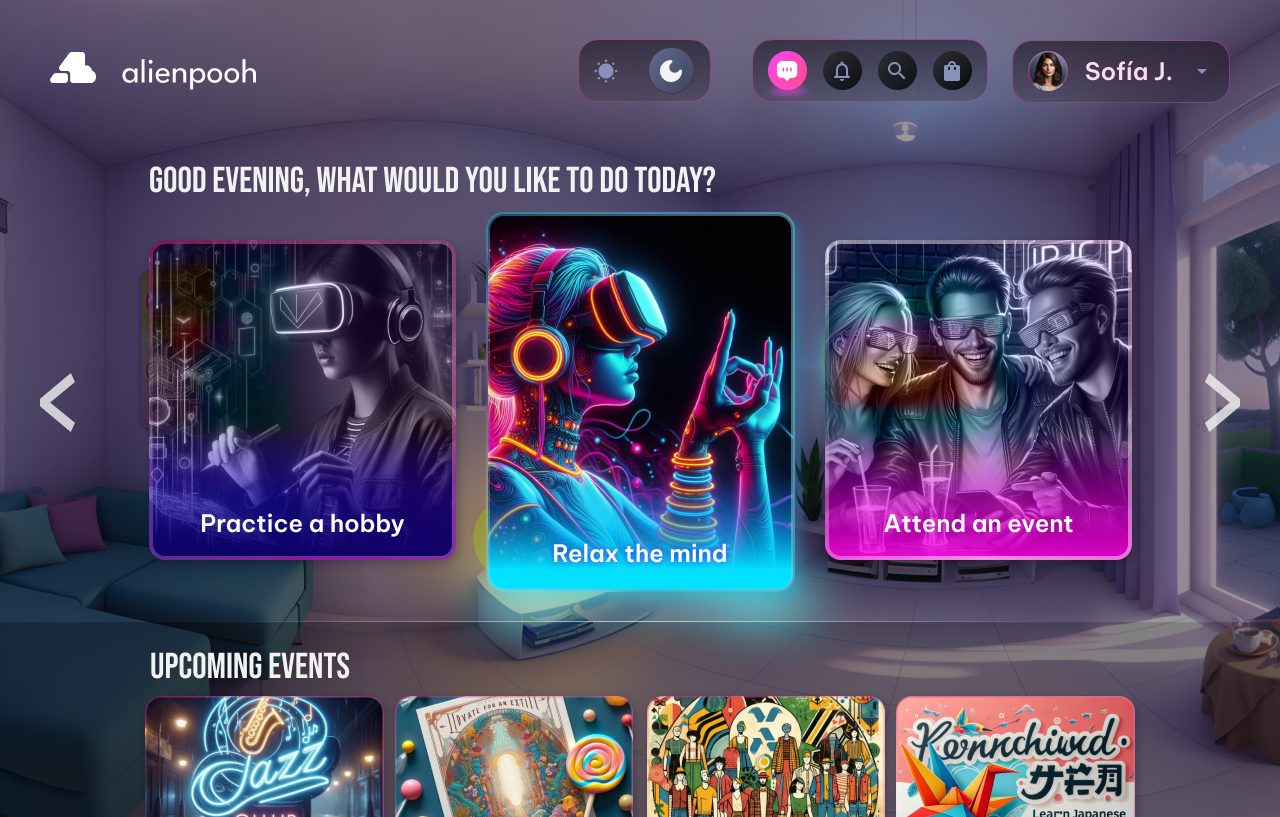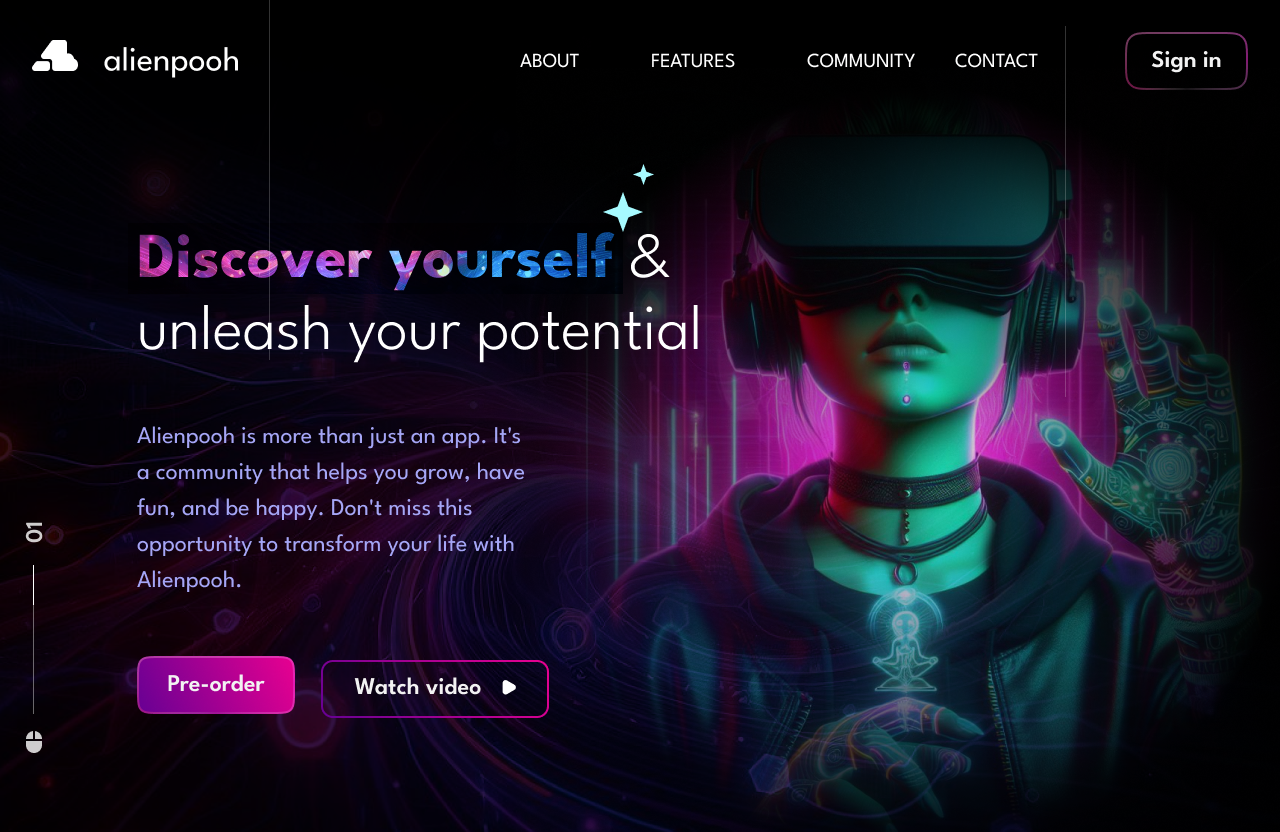All-in-one platform designed to fostering emotional well-being and virtual connections.
In 2020, the world faced an unprecedented crisis that reshaped how we live, work, and connect. Amid isolation and uncertainty, Alienpooh was born—a pandemic-inspired project to bridge the gap between personal well-being and meaningful connections.
As the product designer, I set out to create an innovative platform that would simplify life organization and foster emotional closeness in a fragmented world.
Workflow


Market Research
An analysis of the existing platforms on the market was carried out. Through this research we found a number of platforms focused on improving different areas of life, but we did not find one that covered different spheres of life from one place.
Therefore, it became a bit complex for users to keep a good diary about their processes or to keep their diaries in order.
The Challenge: Complexity in Simplicity
The pandemic revealed gaps in how individuals managed their personal processes. Existing platforms focused on isolated aspects of life, leaving users juggling multiple tools to track mental health, maintain diaries, and connect with loved ones.
The challenge was clear:
How do we design a unified platform that feels intuitive, comprehensive, and emotionally supportive?
How can we prioritize both functionality and user delight?
Diving into the Problem: Understanding the Human Side
User research is a process that helps you understand the needs, preferences and behaviours of your potential virtual reality (VR) users. By conducting user research, you can gain valuable insights into how to design and develop a VR application that is usable, engaging and satisfying for your target audience. We can also get to know better what our users' pain points are and provide an appropriate solution for each of their needs. Therefore, it became a bit complex for users to keep a good diary about their processes or to keep their diaries in order.

Empathy map

Key Insights
• Users felt overwhelmed by scattered tools for life management.
• Many craved a sense of closeness with loved ones, even virtually.
• The emotional design of platforms was often overlooked, leaving users feeling disconnected.
These insights fueled the foundation of Alienpooh: an all-in-one platform with a human touch.
Vision and Ideation: Sketching the Future
With a clear understanding of user needs, I shifted to brainstorming and prototyping:
Big Idea: Create a "personal space" where users could manage multiple aspects of their lives—mental health tracking, journaling, and virtual connections—all in one seamless experience.
Design Principles:
• Simplicity: Reduce cognitive load through intuitive workflows.
• Emotional Design: Evoke a sense of calm and connection through colors, illustrations, and animations.
• Flexibility: Adapt features to different user journeys.
Wireframes and Low-Fidelity Prototypes:
I sketched early concepts to visualize workflows and test ideas with users. This iterative process ensured a design deeply aligned with user expectations.



Building Alienpooh
As the design took shape, I focused on creating a cohesive and delightful user experience:
High-Fidelity Designs:
• A serene and playful interface that balances functionality with emotional warmth.
• Seamless navigation across diverse features, from journaling to well-being tracking.
Design System: I established a reusable design system to ensure consistency and scalability. This included typography, color palettes, and reusable components, all documented for future adaptability.
Collaborative Feedback Loops: I worked closely with users, developers, and stakeholders to refine the design at every step.




What I Learned
Every design project is a journey, and Alienpooh taught me invaluable lessons:
Emotional Design Matters: People don’t just interact with platforms—they feel them. Designing for emotions is as critical as functionality.
The Power of Iteration: Early testing and rapid feedback loops are the key to solving complex problems effectively.
Adaptability is Essential: Building a flexible design system not only streamlines current projects but also sets the stage for future growth.